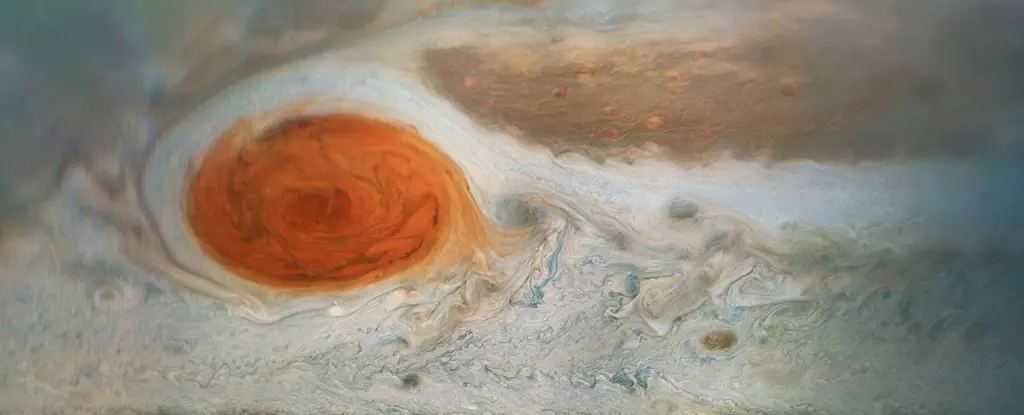Throughout history, Jupiter’s Great Red Spot (GRS) has captured the fascination of astronomers with its massive size and powerful storms. Dating back to the 1600s, the GRS has been a longstanding feature of the Solar System. However, despite centuries of observation, the exact date of its formation and its longevity remain subjects of debate. Have astronomers been witnessing the same phenomenon all this time, or has the GRS transformed over the years?
The Birth of a Giant
The GRS is a colossal anti-cyclonic storm larger than Earth, with wind speeds exceeding 400 km/h. Its origins may be traced back to the early 17th century, when a German Abbott first observed Jupiter through a telescope. Over the years, various astronomers reported sightings of the storm, leading to its designation as the “Permanent Spot” by Giovanni Cassini in 1665. However, the GRS disappeared from view for 118 years before reemerging at the same latitude. This raises questions about the continuity of the storm and its evolution over time.
Recent advancements in technology, such as space telescopes and spacecraft, have provided new insights into Jupiter’s GRS. NASA’s Voyager 1 captured the first detailed image of the storm in 1979, followed by the Galileo and Juno missions. Juno, in particular, has delivered high-resolution images and data about the GRS, shedding light on its structure and dynamics. By studying the depth and dimensions of the storm, scientists have gained a better understanding of its behavior within Jupiter’s complex atmosphere.
Decoding the Enigma
In a groundbreaking study published in Geophysical Research Letters, researchers combined historical records with computer simulations to unravel the mystery behind the GRS. Lead author Agustín Sánchez-Lavega proposed that the storm’s longevity exceeds 190 years, based on observations dating back to the 18th century. Contrary to earlier theories, the team concluded that the GRS did not form from a superstorm or vortex merger but rather resulted from the South Tropical Disturbance (STrD). This elongated cell trapped within Jupiter’s winds gradually evolved into the compact and coherent structure we see today as the GRS.
Through supercomputer simulations of the STrD, researchers observed the formation of an anti-cyclonic storm similar to the GRS. As the elongated cell shrank and became more coherent, the storm rotated more rapidly, eventually resembling the current GRS. This evolutionary process likely began in the mid-1800s, suggesting that the GRS is approximately 150 years old. By studying these simulations and historical records, scientists have pieced together a timeline of the storm’s development, from its elusive early sightings to its modern manifestation as a planetary giant.
Jupiter’s Great Red Spot remains a source of intrigue and wonder, embodying the dynamic nature of our Solar System. By combining historical observations with cutting-edge research, scientists have uncovered the secrets behind this iconic storm. The evolution of the GRS serves as a testament to the ever-changing landscape of Jupiter’s atmosphere and the continuous quest for knowledge in the field of planetary science. As we look to the heavens, the mysteries of the Great Red Spot continue to inspire curiosity and exploration, inviting us to unravel the complexities of our cosmic neighborhood.


Leave a Reply